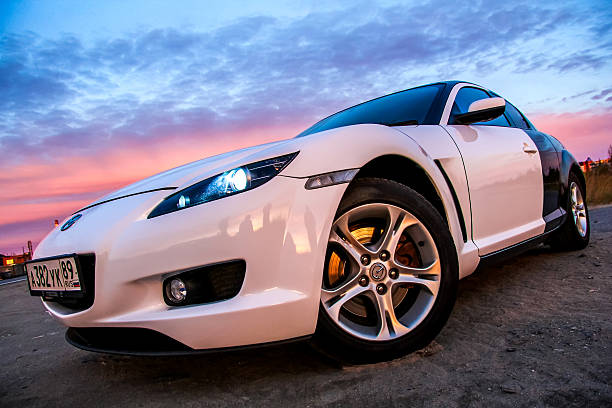The Mazda BT-50 is a popular ute brand in Australia. It can be purchased in various configurations and with different body styles.
Mazda has 19 options, starting with the entry-level single-cab 2WD chassis with manual transmission to the top-of-the-line dual-cab GT 4X4 auto model.
The Mazda BT-50 XTR 4X4 and six-speed auto, as tested, is priced at $50,890. This puts it in second place in the BT-50 hierarchy behind the $53,140 BT-50 GT model.
The BT-50’s exterior features Mazda’s familiar but controversial corporate face. This distinguishes it from other competitors who adopt more truck-like styling. Since day one, this has been a source of controversy and continues to divide opinions about the BT-50.
The rest of Mazda’s styling is flawless. Mazda’s rear profile and side panels look as good as any competitor in this segment.
The Mazda BT-50, however, is almost identical to the Ford Australia-developed Ranger on which the BT-50 is based.
However, the Mazda has a significant advantage in price over its Ford Ranger Double-Cab counterpart, priced at $53,390 for a manual.
The Ranger is more expensive than the Toyota Hilux SR5 DoubleCab, which retails for $50,990.
Both share the same 3.2-litre diesel engine that generates 147kW/470Nm. However, there is one slight difference. The Ford Ranger’s maximum torque is produced at 1500rpm, whereas the Mazda’s peak torque is 1700rpm.
The BT-50 has slightly more turbo-lag than its Ford sibling, most evident when the throttle is raised from a standstill.
The Mazda BT-50 is capable of hauling heavy loads with a locomotive-like powertrain. Thanks to its effortless low-end manoeuvrability, it can also be used on steep gradients.
The close-ratio, six-speed automatic transmission improves the driving experience by providing smooth, precise shifts and excellent throttle response.
It’s powerful, punchy, and free-revving, but it still emits a truck-like amplified diesel clatter, regardless of where you’re at the rev range. The diesel is extremely fuel-efficient, with average fuel consumption of 9.2L/100km. We averaged 8.9L/km by the end of the week, despite consuming a lot of urban work.
The BT-50’s 2WD/4WD switch can be made on the run at speeds up to 120 km/h. It takes only a quarter-turn of a dial near the shifter. This system could withstand torrential rains and gain significantly more traction on slippery roads.
Although the BT-50’s independent double-wishbone suspension at the front and live axle/leaf spring setup at the rear seems to be in good shape, the ride is not comfortable on anything other than freeway-smooth roads. The Mazda’s ride is stiff and jiggly because there’s not enough damping.
On the other hand, the Ford Ranger displays none of these characteristics. Instead, it irons out compressions and patchwork routes far more effectively than the Mazda.
It’s a shame because the BT-50’s on-road dynamics match those of the Ford Ranger – it’s more SUV-like than truck in this regard.
The Mazda BT-50 is a solid ride and the Mazda BT-50 handles well. It turns in sharply and corners fairly flat, but at the cost of ride quality. Despite its high-riding architecture, the Mazda BT-50 feels composed (2086kg kerb weight).
The BT-50 has disc brakes at the front and drums at the rear. However, there is no problem with stopping power. The brakes are solid, and the pedal is well-proportioned.
Although it is a work truck built for the majority of the tradie-tribes, the interior trims and finishes in the BT-50 edition are closer to the passenger car segment.
The cabin is made of soft-touch materials and has metal-look accents throughout. Although the centre stack is busy, it’s clean and well-organized. The ergonomics are very car-like.
The Mazda BT-50’s smaller, leather-wrapped steering wheels are a delight.
The XTR-grade ute also comes with several features. These include satellite navigation with a 5-inch colour screen, Bluetooth phone with music streaming, dual-zone climate control, fog lamps and 17-inch alloy wheels.
Even for people over six feet tall, the rear leg and headroom are surprisingly large, even on an old table. Rear doors open wide to allow easy ingress/egress, and standard-fit side steps are available with an aluminium finish.
The tub has a lot of storage space. It measures 511mm deep, 1549mm in length, and 1560mm in width. It has a maximum braked towing weight of 3500kg, comparable to the best in its class.
Safety standards have improved greatly, with more work trucks becoming weekend family chariots (especially dual-cab models).
Mazda BT-50 comes with a complete suite of active and passive safety equipment, including six airbags, an antilock braking system and brake assist, electronic brakeforce distribution and brake assistance, trailer sway control (for additional stability when towing), adaptive load controller (adjusts stability control systems to maximize traction), hill launch aid and hill descent control. This Mazda BT-50 has a five-star crash rating from ANCAP.
The Mazda BT-50 is a great package that offers all-around versatility and competitive pricing. The Mazda BT-50’s only weakness is its jittery ride on all surfaces except the smoothest.

